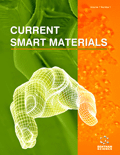Abstract
Background: The Thermoelectric (TE) materials and devices have been receiving much attention over past few decades due to their capacity and conversion between electrical energy and heat energy. The performance of thermoelectric materials can be estimated by the dimensionless figure of merit (ZT) and it is expressed as, ZT = σ S2T /κ. So researchers are seeking for TE materials with high figure of merit. It is well known that density functional theory calculations and Boltzmann transport theory are suitable methods for predicting TE properties. Strontium titanate (SrTiO3) is the model system for thermoelectric enhancement on Perovskite based oxides. It contains nontoxic and environment friendly substances as compared with other thermoelectric systems.
Methods: The theoretical investigations were done using the DFT with the plane wave pseudopotential formalism in Quantum Espresso package. Ultrasoft pseudopotential with the Perdew Burke Ernzerhof (PBE) exchange correlation function under GGA was used for calculations. In addition, theoretical investigations of transport properties for SrTiO3 were conducted within the semi classical Boltzmann transport theory, using a maximally localized Wannier function (MLWF). Results: The band structure clearly shows that valence and conduction bands are present at R and Γ respectively at Brillouin Zone. It reveals that, SrTiO3 exhibits an indirect band gap. The theoretical indirect band gap at Γ- R is 1.8616 eV. The transport properties, such as seebeck coefficient, thermal conductivity, electrical conductivity and figure of merit as a function of chemical potential, were calculated and compared with other available data. Conclusion: Density of states and electronic band structure are well matched with the available data. The semi classical Boltzmann transport theory was applied to study the transport properties of SrTiO3 using a maximally localized Wannier functions with constant relaxation time approximation. Present calculations suggest that this compound may be suitable candidate for thermoelectric applications.Keywords: Strontium titanate, electronic structure, transport properties, quantum Espresso, DFT, GGA, wannier 90.
 18
18





